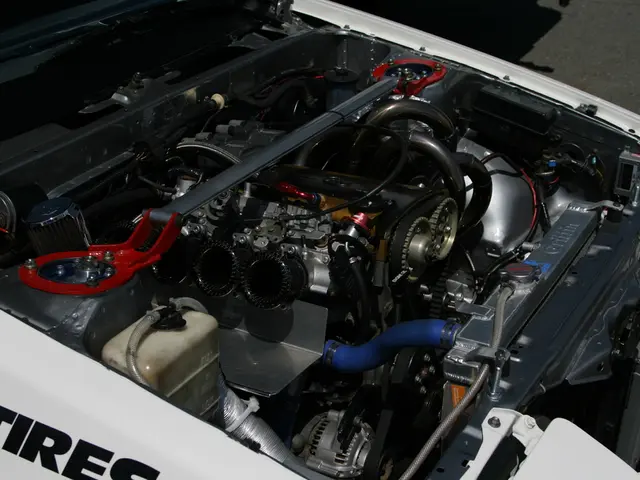Assessing the Performance of Turbodrop® and Turbo Teejet® Spray Nozzles in Minimizing Drift
In the world of agricultural pesticide application, spray drift has long been a significant issue. The size of spray droplets plays a crucial role in this, with smaller droplets being more prone to being carried away by the wind.
Recent developments in nozzle technology have seen major manufacturers introduce new nozzles designed to produce fewer drift-prone droplets than conventional ones. Among these are the drift reduction nozzles and the Turbo Drop nozzles.
These innovative nozzles are engineered to produce larger droplets or altered droplet patterns, making them less susceptible to wind carry and thereby reducing off-target movement of herbicides or pesticides. Operating these nozzles at pressures of 40 psi or lower further minimises drift potential, as higher pressures increase fine droplet formation which is more prone to drifting away from the target.
Standard flat-fan nozzles, on the other hand, pose a greater risk of spray drift when operated at pressures above 40 psi. This can lead to damage to non-target crops or areas.
Research conducted in Ohio has shown that these low-drift nozzles are significantly more effective in reducing spray drift compared to standard flat-fan nozzles. The Turbo Drop nozzles, for instance, produced lower downwind deposits than the Turbo TeeJet nozzles when operated at similar pressures.
Good coverage is essential when applying insecticides and fungicides due to the small size of the target organism. Fortunately, drift is less likely to be a problem when spraying with droplets of 200 microns and larger in size.
Detailed information on the design and working principles of these new low-drift nozzles can be found in the OSU Extension fact sheet, AEX-523.
These findings emphasise the importance of nozzle choice and pressure settings in drift mitigation. Using drift reduction technologies over traditional flat-fan nozzles not only improves environmental protection but also enhances application accuracy.
The research was conducted using a wind tunnel at 11 miles per hour, with tests determining the effectiveness of two low-drift nozzles (Turbo TeeJet and TurboDrop) in reducing drift. Droplet sizes from nozzles at different pressures were measured using a laser droplet sizer.
In conclusion, the introduction of low-drift nozzles represents a significant step forward in reducing the off-target movement of pesticides and herbicides, thereby minimising potential harm to non-target crops and the environment.








